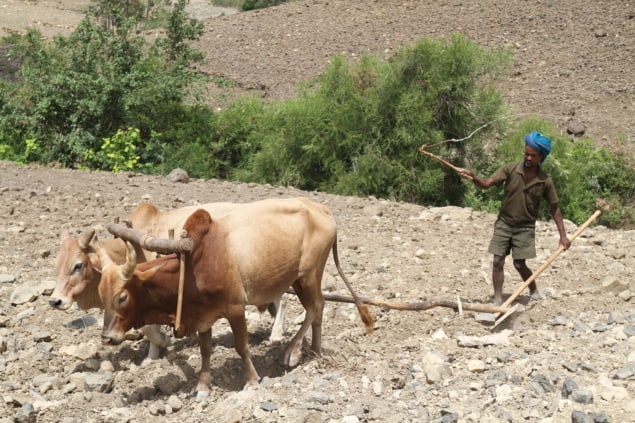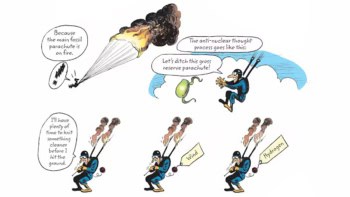
Sorghum yields in the Ethiopian highlands could decrease as intense El Niño events become more common, a team from the US and Ethiopia has found. Climate change is expected to increase the region’s rainfall overall but droughts are likely to become more prevalent early in the growing season when crops are vulnerable.
Although the researchers acknowledge uncertainty around the precise pattern of the changes, their predictions indicate that sorghum yields in the worst-affected years could fall by as much as 40%—an effect that is overlooked by studies that focus only on annual changes.
As a drought-resistant grass that can thrive in unimproved soils, sorghum is the grain of choice in semi-arid environments where fertilizer inputs are economically unfeasible. The plant has become especially important in sub-Saharan Africa, where it’s grown as a subsistence crop on small farms and on fields not suited to other species.
Sorghum’s tolerance to drought might suggest that its reliability as a food crop will continue even as climate change alters patterns of rainfall. The way that dry periods are distributed through the growing season, however, is at least as important for the crop as the amount of rainfall over the season as a whole.
To assess the influence of drought on sorghum yields, Michael Eggen of the University of Wisconsin Madison in the US and colleagues employed a computer model that links plant growth to weather conditions.
The simulations showed that, though robust to rainfall deficits at the seasonal scale, sorghum yields are acutely sensitive to water shortages in June, when seeds are planted and early growth takes place. Such conditions occurred in 2015, when a particularly strong El Niño led to harvests that farmers consider to be as bad as or worse than those associated with the famines of the 1980s and 90s.
Eggen and colleagues combined the simulation results with climate forecasts from 14 general circulation models chosen for how well they relate rainfall in the Ethiopian highlands to the El Niño Southern Oscillation. The researchers applied the models to two scenarios: one in which the concentration of carbon dioxide in the atmosphere levels off at around 600 parts per million (ppm), and one in which it rises to well over 1000 ppm by 2100.
The models suggested that, in general, precipitation in the Ethiopian highlands will rise over the course of the century, but June droughts will become more prevalent. Temperatures will also increase, although their effect on sorghum yield is likely to be small compared to the changes in early-season rainfall.
“Somewhat higher temperatures are not necessarily a major problem if they are accompanied by higher rainfall,” says Eggen. “What our study shows is that it is really those extreme dry June events that could lead to catastrophically lower yields.”
Given sorghum’s unusual resilience to drought and poor soil, farmers in the region tend to persist with the crop even when early-season water deficits cause seedlings to fail. This means that strategies to avert food shortages in strong El Niño years are limited.
Eggen and colleagues suggest that the best way to increase food security in the short term is to develop varieties of the plant that cope with dry periods in June, either because of an innate resilience to drought, or because they grow more quickly and can be planted later in the season.
“The problem with shorter season varieties is they often need more inputs to deliver similar yields in the shorter time frame,” says Eggen. “More drought-tolerant varieties might exist, because sorghum is grown in drier parts of Ethiopia and Sudan. Farmers in our study area have not needed them because rain in the highlands is generally more plentiful.”
Eggen and colleagues reported their findings in Environmental Research Letters (ERL).



